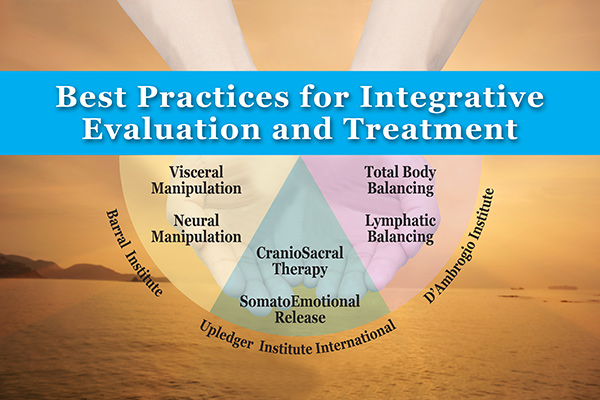
The following blog post is sponsored by Upledger Institute International.
Is it really necessary to learn different modalities?
Yes. The International Alliance of Healthcare Educators (IAHE) (the global coalition comprised of Upledger, Barral, D’Ambrogio Institutes, and many others) encourages all therapists to incorporate integrative therapies into their work with clients. By understanding and utilizing the core essences of different modalities and approaches, the therapist is better equipped to create a plan for treatment.
When a therapist looks at treating the human body, the complex anatomy has to be taken into consideration, including bones, joints, muscles, nerves, skin, superficial fascia, deep fascia surrounding the muscles, visceral fascia that surrounds organs, and the deepest level of fascia of the craniosacral system. It’s important for the therapist to learn many approaches and look at different sources in the body to support the client’s needs.
How will therapists benefit from a broader toolbox?
The more techniques you know, the more clients you can help. As a health-care practitioner, having a wider focus and different perspectives will help you assess the source and better treat the client. The most challenging cases force us to learn more about anatomy and physiology. Anything can go wrong with the body, so having more skills to address a wide scope of issues allows us to approach treatment with the technique that will be the best option.
How do we all determine where to begin—or end—a treatment?
The most important step in treatment is evaluation. For example, once you assess there is a problem in the shoulder, you need to determine whether the issue is indeed in the shoulder, or if it’s coming from somewhere else. A thorough evaluation and an integrative approach is the only way you can tell which system or organ to treat to alleviate the shoulder.
What’s the best way to find out about integrating different modalities?
IAHE is offering a free online program titled “Best Practices for Integrative Evaluation and Treatment.” On August 7, 2021, join a panel of experts from three institutes to learn how to assess when and why an integrative treatment approach is beneficial—and how to make the most of the modalities you have studied. For more information or to register, visit Upledger.com.
